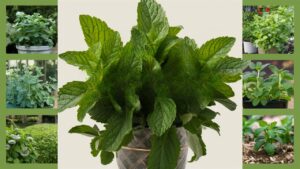Mums, also known as chrysanthemums, are popular flowers for fall decorations. They can be grown from seeds or bought as plants. If you want to grow your own mums, on this page, you’ll find some helpful information on how to grow and care for Chrysanthemum on this page.
Best Chrysanthemum Varieties
| Image | Name | Rating | Shop |
|---|---|---|---|
 | Assorted Classic Chrysanthemum Seeds | ||
 | Assorted Pastel Chrysanthemum Seeds | ||
 | Chrysanthemum Robinson’s Seed Mix |
How to Grow and Care for Chrysanthemum
Chrysanthemum Hardiness Zones
The USDA hardiness zone for Chrysanthemum is 3 to 9. This means that it can be planted in most areas of the United States. It is important to note, however, that Chrysanthemum is a perennial plant, so it will die back in winter and then regrow in spring. If you live in an area with a harsh climate, it is best to plant Chrysanthemum in a protected location, such as behind a row of evergreens or along a foundation.
How Much Sun Do Chrysanthemum Need
Chrysanthemums are one of the few flowers that can take a lot of sun. They need at least six hours of direct sun each day to bloom well. If you don’t have a lot of sunny space, grow them in containers so you can move them around to follow the sun.
Chrysanthemum Soil Requirements
Chrysanthemums like rich, moist soil. Adding compost or manure to the soil will help to keep it moist and provide nutrients for the plants. Mulching around Chrysanthemums will also help to retain moisture in the soil.
Chrysanthemum Soil pH
Chrysanthemums prefer slightly acidic to neutral soil. A pH of 6.0 to 7.5 is ideal. Soil that is too alkaline (pH 7.5 or higher) or too acidic (pH 5.5 or lower) will not be suitable for growing chrysanthemums.
To increase the acidity of your soil, you can add organic matter such as peat moss, compost, or manure to the soil. To make your soil more alkaline, you can add lime to the soil.
Chrysanthemum Plant Spacing
Chrysanthemum plants should be spaced 2 to 3 feet apart. This will allow them enough room to grow and develop properly. Additionally, make sure to plant them in an area that receives plenty of sunlight since Chrysanthemums thrive in bright, sunny conditions.
Chrysanthemum Temperature Requirements
Mums prefer cooler temperatures, between 18-24 degrees Celsius (64-75 degrees Fahrenheit). They can tolerate colder or hotter temperatures, but they may not bloom as profusely in warmer climates or may not look their best. For this reason, it’s important to keep an eye on your mum plants if you live in a warmer climate to make sure they’re staying healthy.
Chrysanthemum Fertilizer Requirements
When it comes to fertilizing chrysanthemums, you’ll want to use a 20-10-20 fertilizer in spring. This will give the plants a good solid foundation to start growing. In summer and fall, you can switch to a 5-10-5 fertilizer. This higher phosphorus formula will help the plants produce more flowers.
Chrysanthemum Water Requirements
Chrysanthemums require around 1-inch of water a week. When watering, be sure to water the base of the plant rather than getting water on the leaves especially in the fall and winter to avoid root rot, powdery mildew, and other fungal diseases.
Chrysanthemum Humidity Requirements
Mums (chrysanthemums) can handle both low and high humidity, but they prefer moderate amounts of humidity.
Chrysanthemum Pests
If you’re growing chrysanthemums, it’s important to be on the lookout for pests. Common chrysanthemum pests include aphids, two-spotted spider mites, and chrysanthemum leafminers.
Related Articles:
Chrysanthemum Diseases
Chrysanthemums are susceptible to a variety of diseases, including rust, wilt, and powdery mildew. To control these diseases, it is important to practice good gardening hygiene, such as cleaning up dead leaves and debris around the plant and keeping the area around the plant free of weeds.














